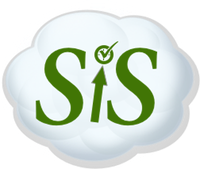Craig Mod beautifully expresses one exciting aspect of the iPad as a distribution device for what he calls definite content. The emphasis is on the potential for presentation and layout for richer content but let’s face it large and even larger screens exist but are just not as easy to hold, carry, and interact with. I think one feature that Craig didn’t mention that may seem insignificant will turn out to be a big deal – being able to effortlessly switch layouts by simply rotating the iPad’s orientation. I can foresee this becoming something that people will find so natural and useful that they will just start to do it unconsciously when they want to view or manipulate their content differently. Personally I would find very useful the ability to have different user configurable default perspectives in Omnifocus (GTD todo list software) in portrait and landscape modes.
What still remains to be written is the innovation to come in new ways of using the tactile and sensor interface to interact with ebooks. In the not too distant future people will see as quaint the first primitive implementations which intended to ease people into the new medium by emulating characteristics of physical books instead of unleashing the potential of the new digital medium. I think page turning animations fall squarely in this category.
As alluded to in Craig’s piece, in a digital medium with virtually limitless scope, why be limited to the boundaries of a page layout when the device can be used as a window on a whole new world. Some new thinking will be required on how to organize information to lead readers (interacters?) through various paths, establish what has been previously viewed/processed, and provide various types of updates.
How about the stars on stars interview format Oprah used for her Oscar special? Variations on that concept could be used to see various analyst’s commentary on the main content. The key could be simplicity and intuitiveness for being able to interact with these different views. At the very least digital books should have an elegant way to add your own annotations.
Another use case for the iPad could be to use it as a control panel window into a larger display whether it is a HDTV, a large screen iMac, or a desktop with multiple displays. You can think of it as a touch controlled “Wacom”-like tablet and keyboard for interacting with a larger display with the ability to run different software. Can control of projection HUD displays be far behind?
A whole new blog post will be written regarding the question:
What is the difference between web page content and an eBook?
In this technology mashup world that requires some pondering.
